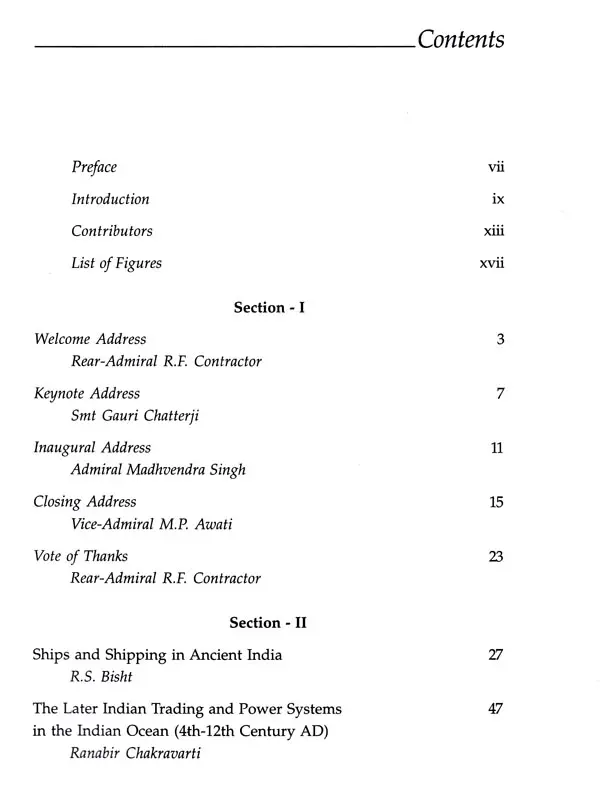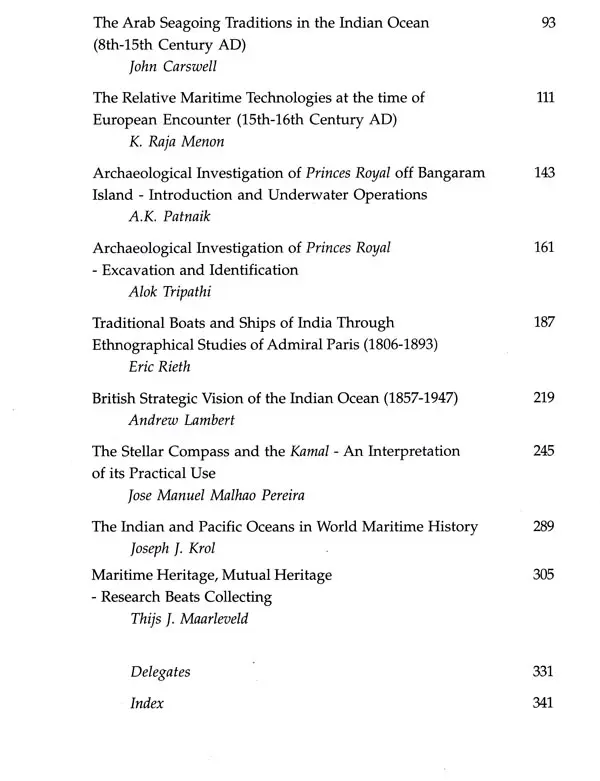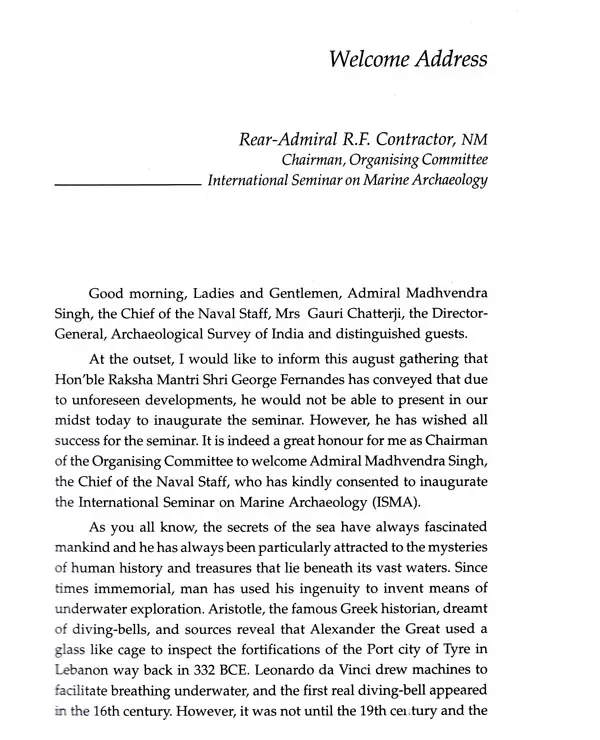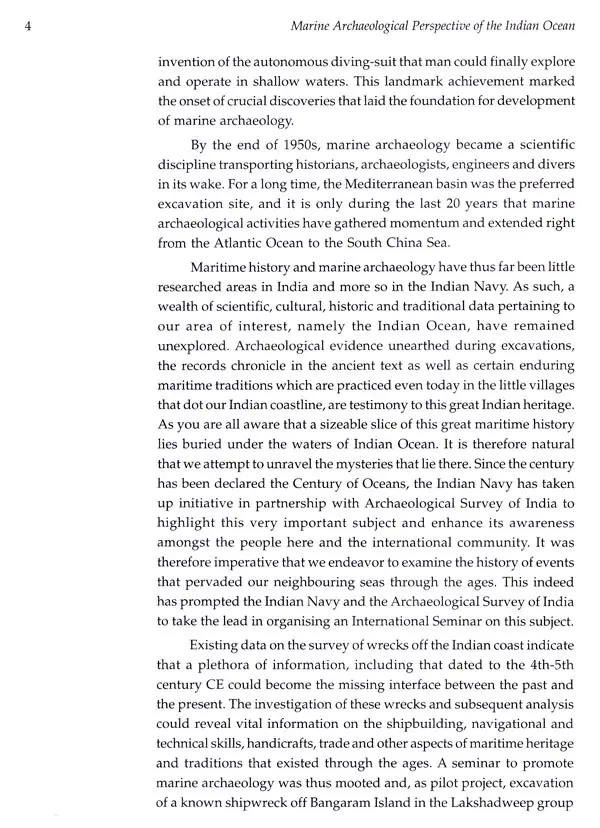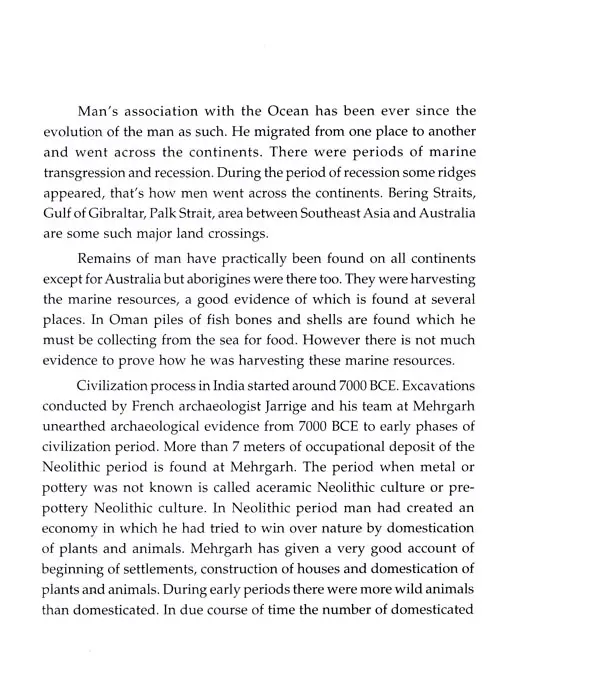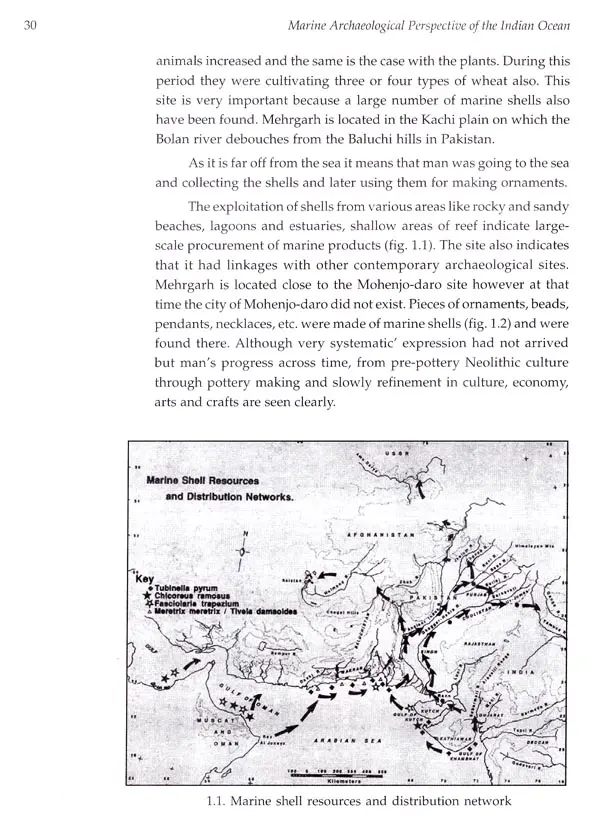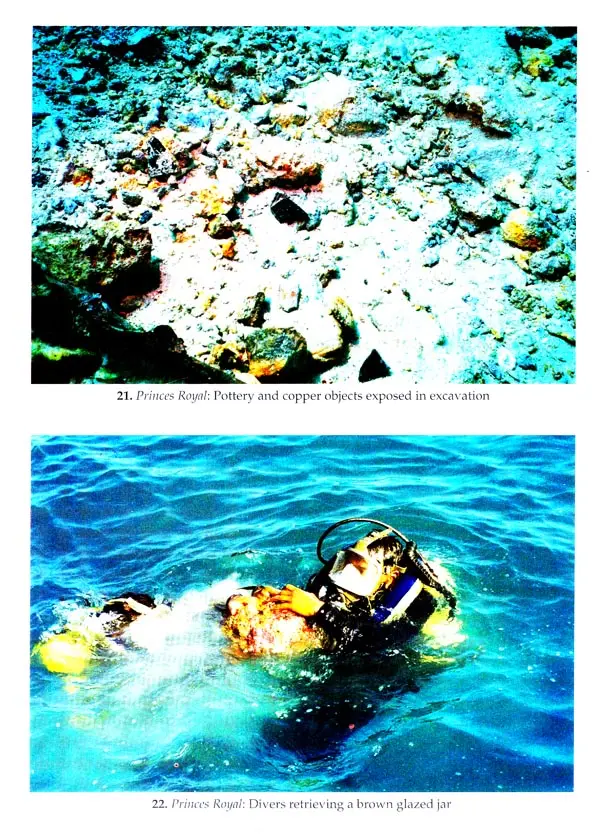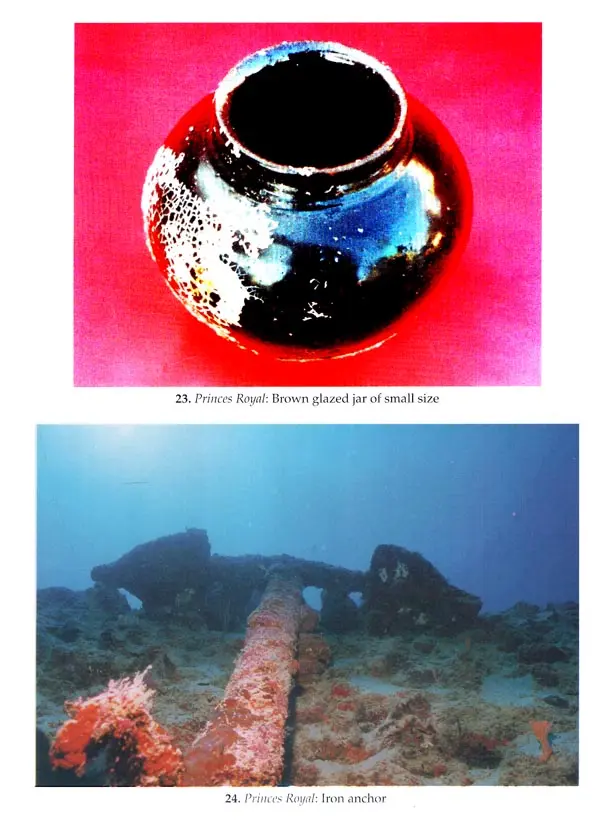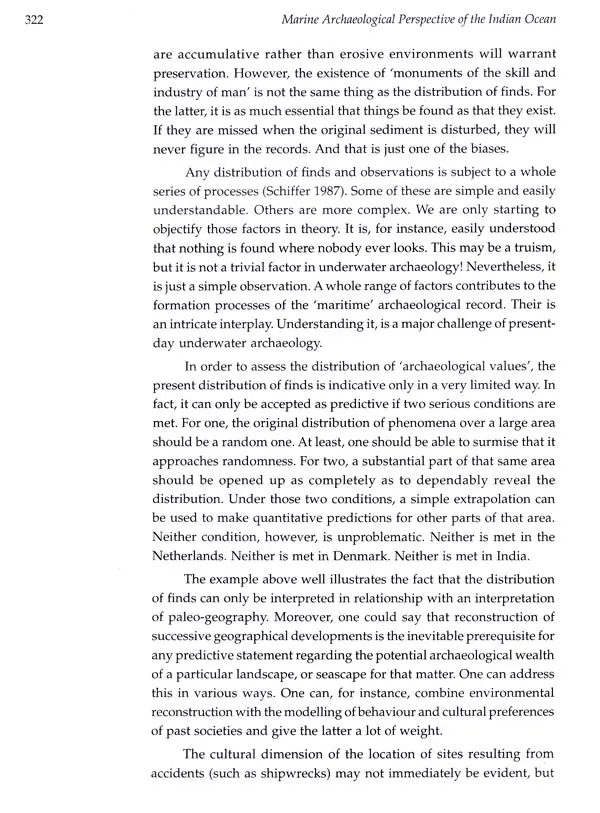
Marine Archaeological Perspective of the Indian Ocean
Book Specification
| Item Code: | UAE954 |
| Author: | Alok Tripathi |
| Publisher: | Sharada Publishing House, Delhi |
| Language: | English |
| Edition: | 2008 |
| ISBN: | 9788188934539 |
| Pages: | 391 (Throughout Colour and B/W Illustrations) |
| Cover: | HARDCOVER |
| Other Details | 11.00 X 9.00 inch |
| Weight | 1.53 kg |
Book Description
The Indian Ocean, covering about 20% of the earth's water surface, is the third largest of the world's oceanic divisions. It has been an arena of migration, trade and cultural interchange since antiquity and its littoral has played an important role in world history. The historical and cultural dynamism of the Indian Ocean is yet to be studied properly.
India is centrally located in the Indian Ocean. With more than 7,500 km long coastline, her history and culture has been influenced with activities in the Indian Ocean. The researches aimed to understand the role of the sea, so far, have been limited and her over 5000 years old maritime history is yet to be written, systematically.
Realising the need for serious studies for writing definitive maritime history and sincere efforts to search, study and preserve underwater cultural heritage the Archaeological Survey of India and the Indian Navy have come together to organise joint fieldworks and International Seminar on Marine Archaeology (ISMA).
Limited copies of the first "Proceedings of the International Seminar on Marine Archaeology" were published in 2004 by the Organising Committee and they were distributed long before. It is nearly three years since demand for the book has been on increase. Meanwhile the Proceedings of the ISMA-2 were brought out where several things were standardized. During the organization of ISMA-3 the Organising Committee decided to bring out the revised version of the proceedings of the ISMA-1. Another decision was made to get it published in collaboration with a publisher to ensure wider distribution and regular supply.
Readers would find this revised edition in entirely new look. With the experience of earlier two publications several improvements. have been made. Not only that, a presentation, which was made by Thijs J. Maarleveld during the seminar is an addition. A word-index has also since been prepared. All along it has been my earnest endeavour to make proceedings of ISMA collectable by all researchers working on Indian Ocean.
I am happy to place "Maritime Archaeological Perspective of the Indian Ocean" with the trust that it would fulfill the growing demand from scholars and researchers alike with its distribution. Collaboration between the Archaeological Survey of India and the Indian Navy is serving its purpose well and the outcome is fresh archaeological evidence and publication of reference material, the necessary steps towards writing a definitive maritime history of Indian Ocean in general and India in particular.
Marine archaeology lies at the heart of maritime history. India's maritime history can be compared to an iceberg. Just one-tenth is visible and has been recorded. The remaining exists as everyone knows, but it is yet to be written. To anyone involved with the sea, in India, the mismatch between our centralised continental preoccupation and the relative neglect of our maritime interests is only too apparent. Naval officers appearing for the Staff College entrance examinations still do not have an authoritative maritime history text to study, as a background material. Yet, maritime history is the foundation for maritime strategy, a subject that will engage the minds of these officers for the next two decades. The Indian history that students grow up with has few references to the sea and often none at all. Hence, the longest period of colonisation that the country underwent is often thought of as having begun at the battle of Plassey, with no explanation of how the British came to be in the district of Murshidabad, or Trichinopoly.
The handicap that Indian maritime history begins with is formidable, and has run its course for two hundred years. To rewrite Indian maritime history comparable to the history on land a project that would take a national effort spread over a couple of decades. The Indian Navy and the Archaeological Survey of India has made a beginning with a series of seminars to attract the best brains in the field of maritime history and marine archaeology to revisit the entire narrative of India's maritime history. At the heart of these seminar proceedings lies the report on the dive over the Princes Royal, a shipwreck lying off Bangaram atoll. The seminar was only the visible portion of the first step of this great journey. Many more such ventures should follow, but more importantly, more collections of well-researched papers will add to the basic material from which a scholar in the future, could write a definitive maritime history of India.
Among the formidable papers presented at this seminar, the first is on the 'Ships and Shipping in Ancient India' as gleaned by the archaeological and literary evidence. Dr R.S. Bisht, a noted archaeologist and one of the foremost authorities on Harappan culture has thrown light on the maritime trade and contacts of Harappans with the Mesopotamians. He also discusses about their boats and navigation. The second paper is by Professor Ranabir Chakravarti on 'Later Indian Trading and Power Systems in the Indian Ocean'. Professor Chakravarti has listed both Western and less known Asian references in a comprehensive piece, that charts a record of Indian ports in international trade during 4th-12th century. At the end of reading his paper it becomes clear, that whatever evidence he has placed on record is so firmly drawn up that it clears up, much of the doubts on the volume and nature of the Indian Ocean trade during this relatively. less researched period. Of particular interest is the material he has presented on maritime activities on the east coast from what is today Andhra, Orissa and Bengal and their links through Myanmar to Southeast Asia.
In the next paper, Professor John Carswell, who comes with a formidable reputation as an archaeologist, presents historical evidence. through the device of excavated pottery and ceramics for the movement of goods across the Indian Ocean. Professor Carswell's emphasis is on what in India is a little known Sri Lankan port of Mantai and its tremendous importance as the sea exit for the prosperous kingdom of Anuradhapura. Favoured as a natural harbour, Mantai would perhaps qualify as the first major landfall in the Gulf - India to Southeast Asia and China trade. Another far-reaching point made by Carswell is the enormous fillip that Arab navigators gave to seaborne trade by taking the risk of starting their eastern voyage during the turbulent tail end of the monsoon, and thereby arriving in India with the entire winter sailing season still ahead of them to make their way farther east.
**Contents and Sample Pages**

